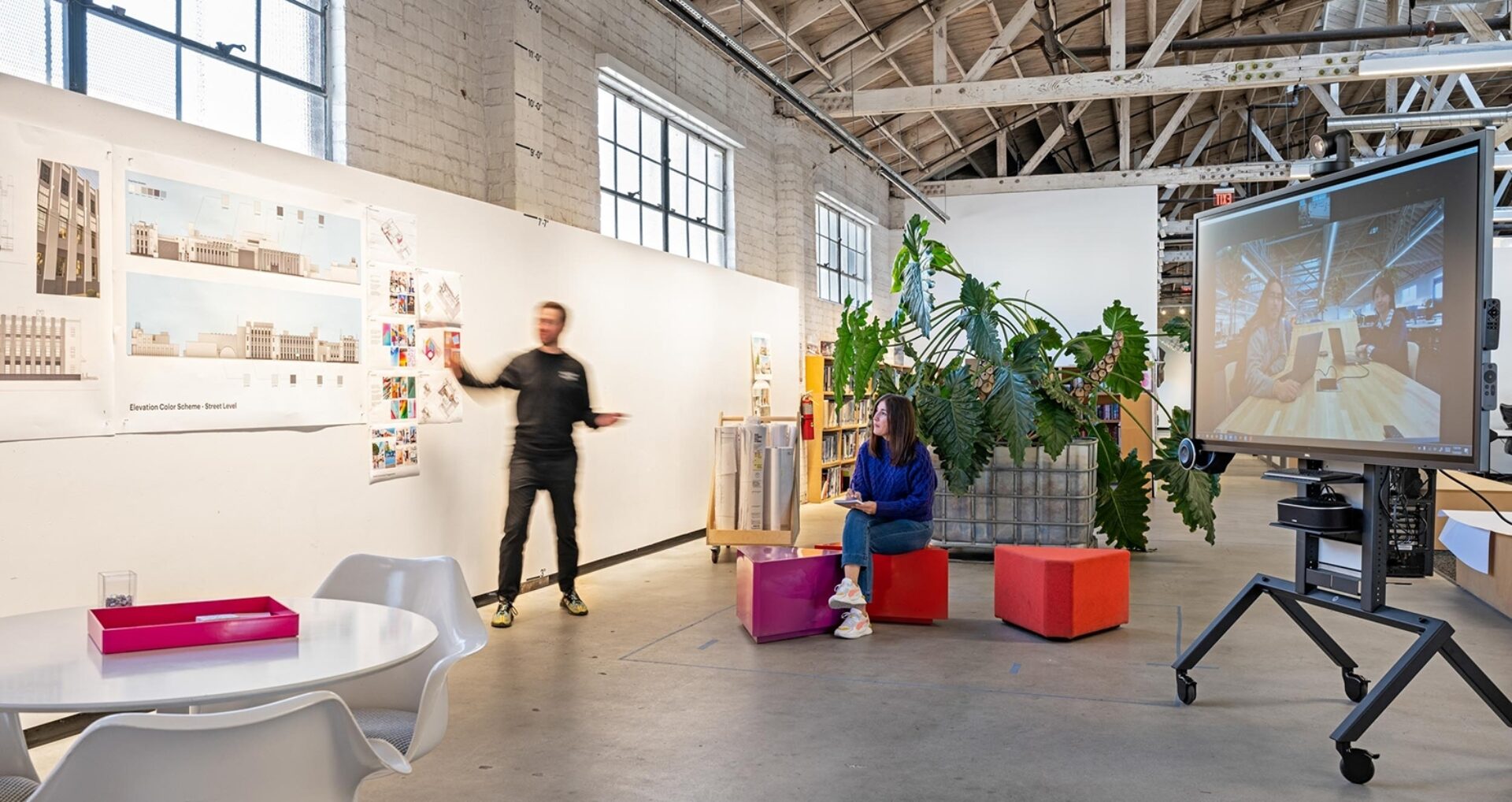Zoom fatigue. Spotty WiFi. Barking dogs. Spectacular audio flameouts.
After spending nearly a year in the shadow of a pandemic, the working world has seen it all.
“I’ve had video meetings with a screaming baby on someone’s lap,” says Jessamyn Davis, COO at design firm RIOS in Los Angeles. “I have children and I know how that is. You just work through it. It’s important to give staff some grace.”
Keeping a team connected and in sync during the COVID-19 crisis has required not just grace, but empathy as well.
Early in the pandemic, there were a lot of protests, helicopters, bright lights, and noise to deal with in New York City. And that was on top of the shutdown of everything familiar to daily routines.
“There were definitely times when I said, ‘If you can’t focus today, take care of yourself,’” says Alexandra Alfaro, design management principal at ESI Design, an NBBJ studio in New York. “Younger, less experienced staff need permission to do that.”
Collaboration 2.0
Even firms with an established culture of collaboration were forced to confront new realities. Those magical moments of creative epiphany when a team huddles together to finally crack a design dilemma can be tough to duplicate digitally.
Alfaro says that because ESI Design has always had a strong sense of community and uses different platforms for sharing things, there was already a foundation for working remotely—but there were still new rules of the road.
“One thing that was important from the get-go was creating a feedback loop for checking in about what’s working and what’s not,” she notes. “We have a meeting every week with producers and project managers who work with all the teams. It was important to get tips, tricks, and tools to everybody, one-on-one when appropriate, and to make sure we heard all voices, not just one. When we got enough feedback, we built a schedule for the whole office and created shared blocks of time for people to do their work and be creative.”
All staff at ESI Design have the option to work remotely during this time, but about 8 to 10 people (out of 40) have made regular use of the office, scheduling space a week in advance.
To keep the creative conversations outside of project deliverables alive and well, teams often use visual collaboration platforms. “These are intended to mimic the informal idea generation we miss from being in the same physical space,” says Alfaro.
The vast open-office space at Rios would normally be bustling with creative energy. But with most of the staff still working from home, the firm has also turned to tech—and even found some added efficiencies as teams simultaneously mark up presentations, rather than commenting one at a time. “We wouldn’t have been able to collaborate as quickly in the office,” Davis says. “Anyone can drop in on someone else’s board.”
But while collaborating has become more streamlined, there are some things remote tools just can’t solve or replace, like reviewing samples. “Textures and colors cannot always be represented accurately digitally,” she says. “Those team members come to the office more frequently. We have dedicated carts by project so someone on the team will pull or order samples and someone else will come in and review it. This takes a lot of coordination.”

The Ties That Bind
There’s no question that designers are perfectly capable of working at home, but the simple truth is that many people miss socializing with each other. Personalities and friendships are part of the DNA of collaboration. Keenly aware that isolation and lack of social outlets can affect morale, smart leaders are finding ways to build a new digital culture of collaboration.
“In our studio, colleagues look out for colleagues,” Alfaro adds. “We have an open plan office where we were used to seeing and hearing what’s going on, that was conducive to informal conversations. We created a series of new ‘remote spaces’ to mimic the types of interactions the open office provided. On Slack, staff created their own virtual spaces in the form of channels for lunchtime conversations, sharing of news and articles and general chitchat.”
Senior leadership at Rios make an effort to let staff know how much they’re appreciated for how hard they’re working to keep things moving. For the holidays, leaders hand-delivered gift bags and lunch—complete with including a pre-made cocktail—to staff members’ homes.
The company also hosts 10 different Zoom rooms people can visit to talk about interests like gardening and food, and to catch up with one another. “We try to make sure we have some social outlets for folks,” Davis says, especially for young or single people living alone during this time.
Yet despite all the ingenious ways that teams have devised to collaborate and create virtually, that doesn’t mean the office will go away forever.
“We will get back into the studio,” Alfaro says. “We will come out of this. We want to see each other. We have had a lot of conversations about how to lift up all employees and be inclusive. We are paying attention to real relationships. We will end up in a good place for whatever becomes normal in a year.”
Images: Lead, ExpositionPlace, courtesy of RIOS Los Angeles \ Image one, Collaboration Table at RIOS Design, courtesy of RIOS Los Angeles

